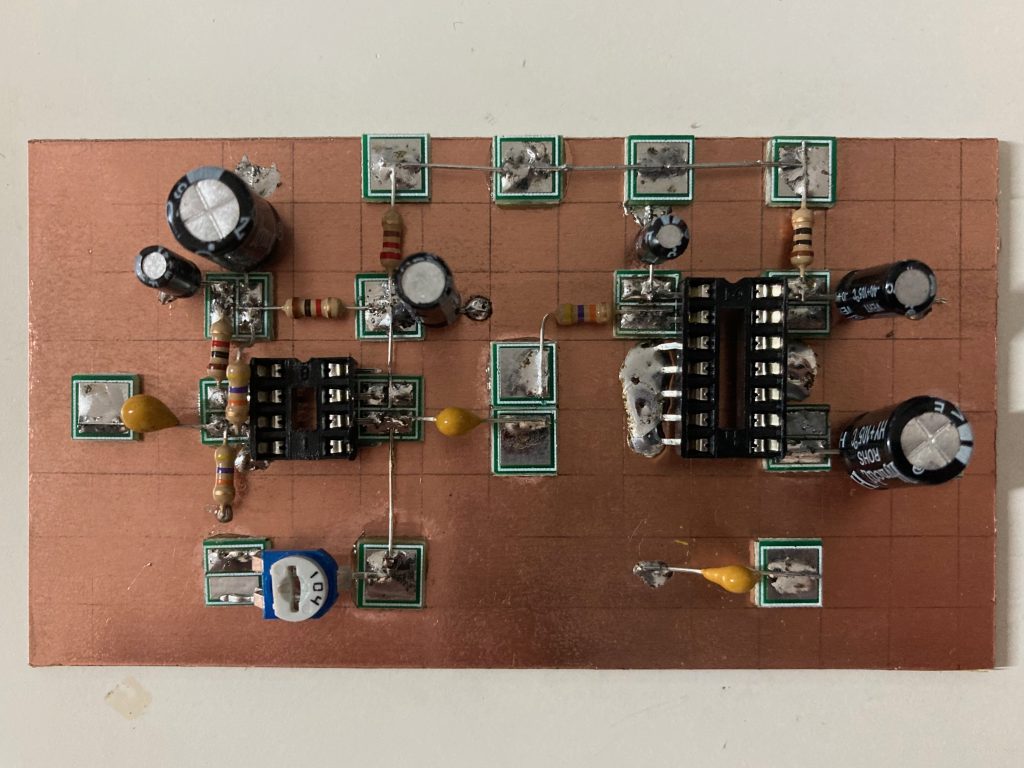Having put the finishing touches to the audio amp I’ve now powered it up and given it the finger on the input treatment, I get buzzing and can hear a slight increase in noise with volume so it seems to be working correctly.
I need to actually try putting some audio through it, but for now it’s complete and can await the other stages.


